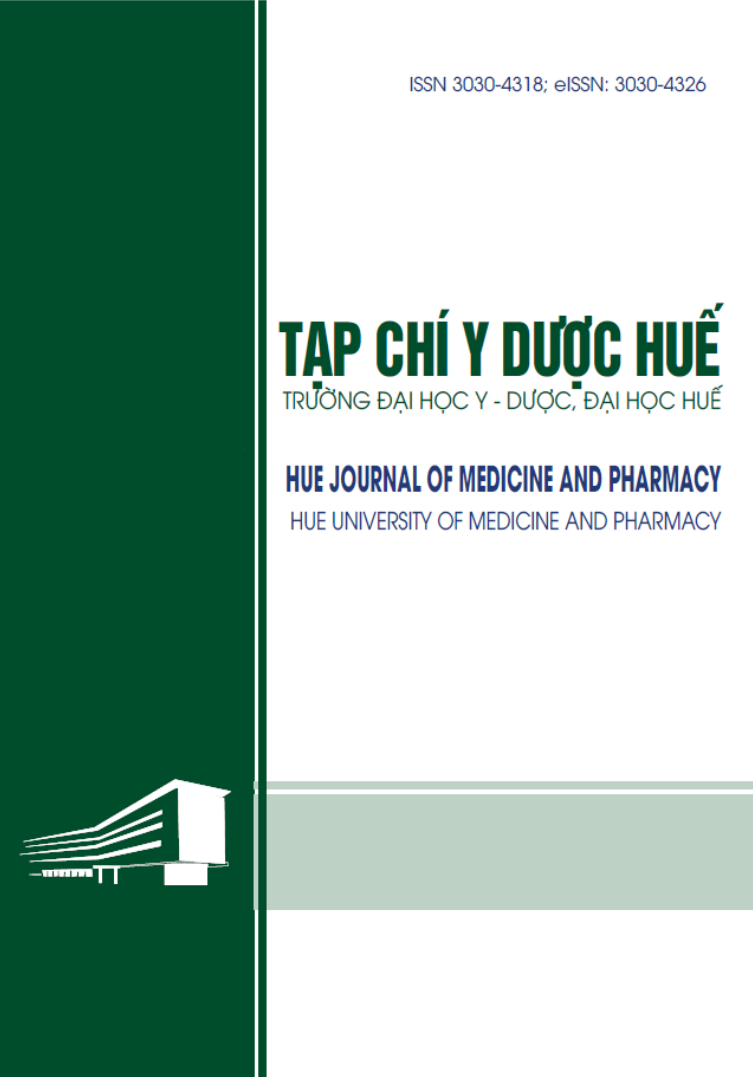Abstract
Background: Laparoscopic mesh placement surgery is widely used in the treatment of inguinal hernia in adults. Appropriate antibiotic use provides significant benefits to patients and the broader community, such as reducing healthcare costs and the prevalence of antibiotic resistance. In the context of widespread antibiotic overuse and global antibiotic resistance becoming an urgent issue, adherence to appropriate prophylactic antibiotic use in surgery is essential. Due to the involvement of synthetic materials in the procedure, many surgeons tend to prolong the prophylactic period, such as treating infections, despite substantial evidence showing no benefit. This study aims to evaluate the clinical, paraclinical, and surgical characteristics, as well as the safety, of appropriate prophylactic antibiotic use in inguinal hernia surgery. Subjects and methods: Cross-sectional descriptive study was conducted on 58 patients undergoing laparoscopic mesh placement for inguinal hernia repair. Patient characteristics, surgical outcomes, and the incidence of surgical site infection were recorded. Results: A total of 58 patients with 61 inguinal hernias were included. Indirect hernias accounted for 82%, of which 11.5% were incarcerated. Mild and very mild postoperative pain was reported in 86.2% of cases, and the average hospital stay was 2.67 days. Intraoperative complications occurred in 6.9% of patients, and postoperative complications in 5.4%. Early postoperative outcomes were rated as good or fairly good in all cases. During follow-up, there was one case of recurrence; other complications were successfully managed with medical treatment. Conclusion: Prophylactic antibiotic use in laparoscopic inguinal hernia repair is safe, does not elevate the risk of surgical site infection, and the use of antibiotics as treatment is not recommended.
| Published | 2025-06-25 | |
| Fulltext |
|
|
| Language |
|
|
| Issue | Vol. 15 No. 3 (2025) | |
| Section | Original Articles | |
| DOI | 10.34071/jmp.2025.3.25 | |
| Keywords | thoát vị bẹn, kháng sinh dự phòng, tấm nhân tạo, nhiễm khuẩn vết mổ inguinal hernia, prophylactic antibiotics, surgical mesh, surgical site infection |

This work is licensed under a Creative Commons Attribution-NonCommercial-NoDerivatives 4.0 International License.
Copyright (c) 2025 Hue Journal of Medicine and Pharmacy
Primatesta P, Goldacre MJ. Inguinal Hernia Repair : Incidence of Elective and Emergency Surgery , Readmission and Mortality. 1996;25(4):835–9.
Singh AN, Bansal VK, Misra MC, Kumar S, Rajeshwari S, Kumar A, et al. Testicular functions, chronic groin pain, and quality of life after laparoscopic and open mesh repair of inguinal hernia: A prospective randomized controlled trial. Vol. 26, Surgical Endoscopy. Springer New York LLC; 2012. p. 1304–17.
Tran H. Endorsement of the HerniaSurge guidelines by the Australasian Hernia Society. Vol. 22, Hernia. Springer-Verlag France; 2018. p. 177.
Bittner R, Arregui ME, Bisgaard T, Dudai M, Ferzli GS, Fitzgibbons RJ, et al. Guidelines for laparoscopic (TAPP) and endoscopic (TEP) treatment of inguinal hernia [International Endohernia Society (IEHS)]. Surg Endosc. 2011;25(9):2773–843.
Simons MP, Aufenacker T, Bay-Nielsen M, Bouillot JL, Campanelli G, Conze J, et al. European Hernia Society guidelines on the treatment of inguinal hernia in adult patients. Vol. 13, Hernia. 2009. 343–403 p.
Centers for Disease Control and Prevention. Surgical Site Infection Event (SSI) [Internet]. National Healthcare Safety Network (NHSN); 2023. Available from: https://www.cdc.gov/nhsn/pdfs/ps-analysis-resources/ImportingProcedureData.pdf
Bittner R, Schmedt CG, Schwarz J, Kraft K, Leibl BJ. Laparoscopic transperitoneal procedure for routine repair of groin hernia. British Journal of Surgery. 2002;89(8):1062–6.
Tamme C, Scheidbach H, Hampe C, Schneider C, Köckerling F. Totally extraperitoneal endoscopic inguinal hernia repair (TEP): Results of 5,203 hernia repairs. Surgical Endoscopy and Other Interventional Techniques. 2003;17(2):190–5.
Phan Đình Tuấn Dũng. Nghiên cứu ứng dụng phẫu thuật nội soi ngoài phúc mạc với tấm lưới nhân tạo 2D và 3D trong điều trị thoát vị bẹn trực tiếp [Luận văn Tiến sĩ y học]. Trường Đại học Y dược Huế; 2017.
Trần Đình Khôi. Nghiên cứu ứng dụng phẫu thuật nội soi điều trị thoát vị bẹn đặt tấm lưới nhân tạo trước phúc mạc qua đường vào ổ bụng [Luận văn Tiến sĩ y học]. Trường Đại học Y dược Huế; 2022.
Hamza Y, Gabr E, Hammadi H, Khalil R. Four-arm randomized trial comparing laparoscopic and open hernia repairs. International Journal of Surgery. 2010;8(1):25–8.
Krishna A, Misra MC, Bansal VK, Kumar S, Rajeshwari S, Chhabra A. Laparoscopic inguinal hernia repair: Transabdominal preperitoneal (TAPP) versus totally extraperitoneal (TEP) approach: A prospective randomized controlled trial. Surg Endosc. 2012 Mar 1;26(3):639–49.
Koch CA, Grinberg GG, Farley DR. Incidence and risk factors for urinary retention after endoscopic hernia repair. In: American Journal of Surgery. 2006. p. 381–5.
Bộ Y tế. Hướng dẫn sử dụng kháng sinh. Nhà xuất bản Y học. 2015;2–5.
Trần Đình Bình. Tình hình nhiễm khuẩn bệnh viện ở các khoa phẫu thuật tại bệnh viện Trường Đại học Y dược Huế năm 2015. 2016;39–43.
Aiken AM, Haddow JB, Symons NRA, Kaptanis S, Katz-Summercorn AC, Debnath D, et al. Use of antibiotic prophylaxis in elective inguinal hernia repair in adults in London and south-east England: A cross-sectional survey. Hernia. 2013 Oct 1;17(5):657–64.
Bratzler DW, Dellinger EP, Olsen KM, Perl TM, Auwaerter PG, Bolon MK, et al. Clinical practice guidelines for antimicrobial prophylaxis in surgery. Vol. 14, Surgical Infections. 2013. p. 73–156.
Sachez-Manuel F, Lozano-Garcia J, JL Seco-Gil. Antibiotic prophylaxis for hernia repair. Cochrane Database of Systematic Reviews [Internet]. 2012. Available from: http://doi.wiley.com/10.1002/14651858
Köckerling F, Bittner R, Jacob D, Schug-Pass C, Laurenz C, Adolf D, et al. Do we need antibiotic prophylaxis in endoscopic inguinal hernia repair? Results of the Herniamed Registry. Surg Endosc. 2015 Dec 1;29(12):3741–9.






